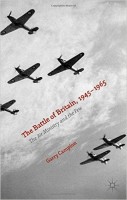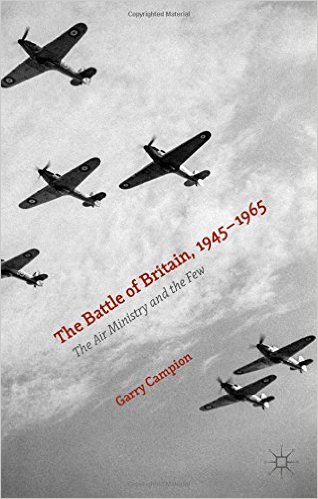 Author: Garry Campion
Author: Garry Campion
Publisher: Palgrave Macmillan – 342 pages
Book Review by: Sonu Chandiram
This book provides a fascinating story and the various circumstances surrounding the famous Battle of Britain. It was written by Garry Campion, who teaches history and architectural conservation at the University of Northampton, about 70 miles from London.
In June 1940, according to a Wikipedia article, Nazi Germany led by Adolf Hitler had conquered most of Western Europe and Scandinavia. About the only territory left to conquer was Britain. He had offered several ‘peace proposals’ to the British, who had rejected all of them. Hitler’s true intention and ambition was to have a German-dominated Europe, and the only country in his way was Britain.
With those British rejections, Hitler angrily ordered the German air force Luftwaffe to literally destroy the whole British Royal Air Force (RAF)! Hitler wanted to achieve nothing less than air supremacy prior to launching Operation Sea Lion, an amphibious (and ambitious!) combined sea-and-land assault against the British mainland.
In July 1940 the Luftwaffe was able to close the English Channel to merchant shipping, and by August, Hitler’s Operation Adlerangriff (Eagle Attack) was launched against RAF airfields in the south of England. But this massive measure did not achieve the desired results, and it was already the first week of September.
In frustration, Hitler and the Nazi Germans began bombing Britain’s cities to destroy the country’s military and civil industries, and dampen overall British morale. Those attacks by Germany fighter planes began on September 7, 1940.
In the early hours of Sunday, the 15th of September, the Luftwaffe launched its largest and most concentrated attack – against great city of London no less. They wanted to draw the Royal Air Force into nothing less than a battle of annihilation. About 1,500 aircraft fought in this great battle known as the great Battle of Britain.
The outcome? The RAF, particularly its well-known Fighter Command summarily defeated the German raids. The air formations of the Luftwaffe were dispersed by a large cloud base, and the Germans failed to inflict large-scale damage to London. Hitler suspended Operation Sea Lion. A few months ago on September 15, 2015, marked the 75th anniversary of the Battle of Britain.
This book discusses the various details of that historic and epic battle – the events, strategies, advances, setbacks, and outcomes. It also presents background materials in eight appendices to give readers a broader view. A list of the book’s contents is provided below to give you the readers an overview, and you can choose which parts and chapters to read first, as it is a rather long one, with nearly 350 pages. The author Garry Campion, who teaches history and architectural conservation at the University of Northampton, about 70 miles from London.
- Introduction
- Part I – Air War, Media War
- Seelowe und Bomben Auf Engeland: The German Perspective, 1940
- Britain’s Fighter Boys; Projecting the Battle of Britain, 1940
- The Battle of the Barges: ‘Blackpot Front’ Propaganda, 1940-1945
- Valorizing and Thanksgiving
- ‘The Greatest Day’: Shaping the Battle of Britain, 1941
- ‘Immortal Few’ : Heroising the Fighter Boys. 1943-1945
- ‘Air Trafalgar Day’: Official Commemorations, 1942-1945
- Commemoration and Popular Memory
- ‘The Fight at Odds’: Revelation, Memorialization, 1945-1965
- ‘Angels One Five’: Historical and Cultural Consolidation, 1946-1965
- Conclusion
- Appendix 1: Chronology of German-focused Events, 1939-1941
- Appendix 2: Nazi Battle of Britain-related Propaganda
- Appendix 3: Radio and Audio Coverage of the Battle of Britain, 1945-1965
- Appendix 4: Printed Coverage of the Battle of Britain,1940-1965
- Appendix 5: Newsreel, Film, and TV Coverage of the Battle of Britain, 1940-1965
- Appendix 6: War Artists
- Appendix 7: Books and Printed Literature, 1940-1965
- Appendix 8: Chronology of Political and World Events, 1945-1965
This book is an interesting read. It contains many details, circumstances, and backgrounds on various decisions, actions, influences, and postponements that have previously not been looked at, so it is valuable for those interested in British history.
Author:
Garry Campion teaches architectural conservation and history at the University of Northampton in the United Kingdom. He has previously published The Good Fight: Battle of Britain Propaganda and the Few, also with Palgrave Macmillan in 2008, and again in paperback in 2010. He is a Fellow of the Royal Historical Society.







